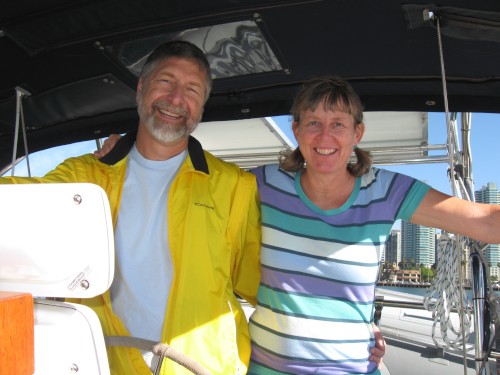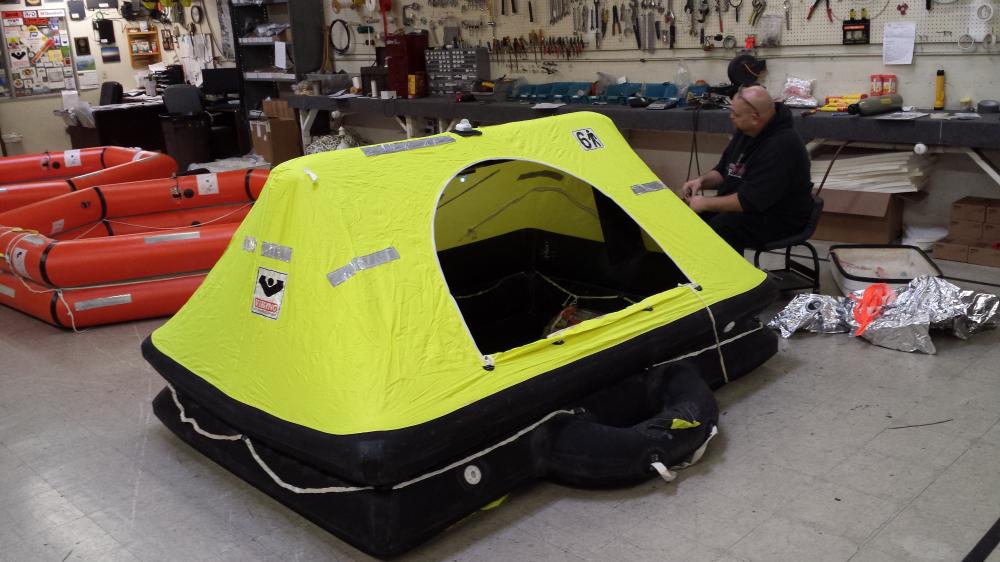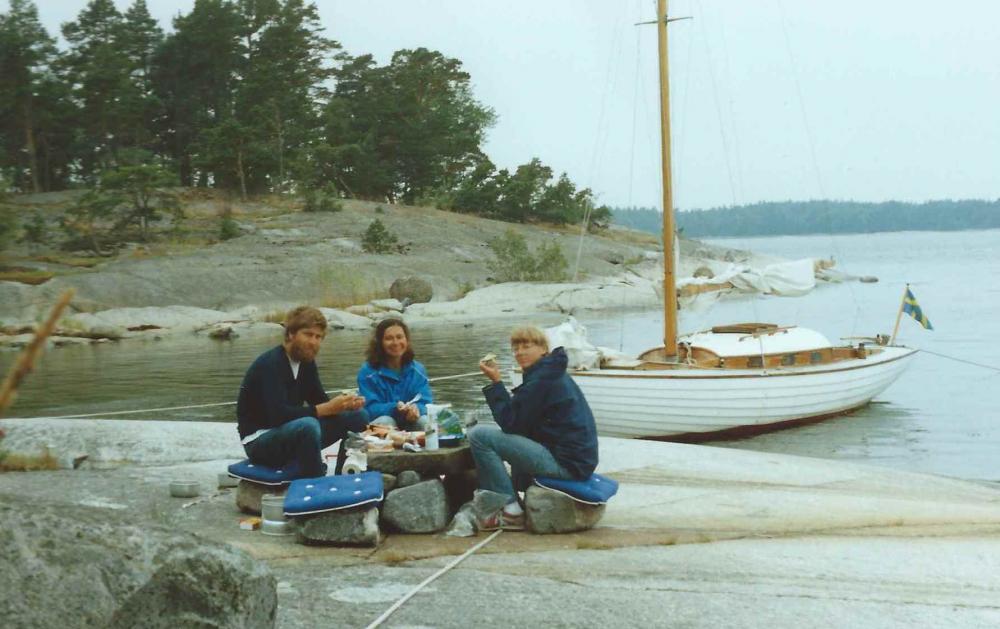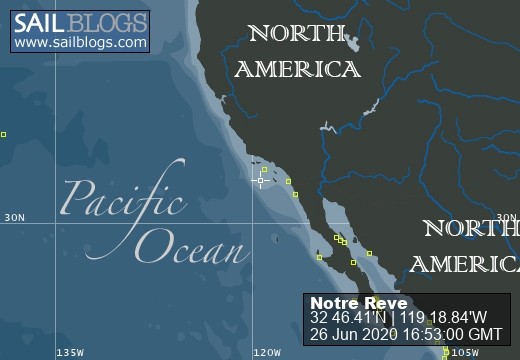
Sailabout
26 June 2020
18 June 2020
14 June 2020
11 June 2020
03 June 2020
30 May 2020 | Reeds Bay, Hilo, Hawaii
07 May 2020
02 May 2020
02 May 2020
27 April 2020 | Under way to Hawaii
24 April 2020 | Under way to Hawaii
24 March 2020 | Makemo, Tuamotus
23 January 2020 | Tahanea, Tuamotus
30 October 2019
17 October 2019 | Amanu, Tuamotus
02 October 2019 | Amanu, Tuamotus
22 September 2019 | Hao, Tuamotus
29 August 2019 | Makemo, Tuamotus
25 August 2019 | Katiu, Tuamotus
10 August 2019 | Fakarava, Tuamotus
Taiohae, Nuku Hiva
01 May 2018 | Taiohae, Nuku Hiva
Marie Delight
We have been here in Taiohae bay on Nuku Hiva for 10 days now. Our first day we just stayed on board recuperating, cleaning up things and inflating the dinghy. Saturday we touched earth again after 28 days at sea. What they tell you is true �- the ground was dancing under our feet. It is a beautiful place, lush and green. A few small stores, an open market. Vegetables and fruits available. A big cruise ship anchored in the bay over the day bringing a bunch of tourists to shore. Amazingly enough there are a bunch of cars I don't know where they are going because the terrain is steep, sheer cliffs everywhere, and jungle. Monday we will check in and find out about tours to the inland and explore some of the island. Wifi is slow or nonexistent.
On Thursday we went on a van tour of the Island. Jocelyn an older French lady married to a guy from the Gambiers was our guide. She has lived on Nuku Hiva 22 years and was very knowledgeable, especially about plants and history. Practically all the fruit trees, coconut palms, bread fruit, mango, banana, guava, etc. even some coffee and avocado was imported to the island early on by the Polynesians and later Europeans. Nuku Hiva is very lush and there is an abundance of trees with and without fruits some more and some less appetizing. Like the stinky cheese fruit �- the name escapes me maybe nono? In1986 The Marquesans started a cultural convention to take place every 4 years on a different Island to teach the younger generation old traditions and crafts like building houses, making tikis (stone sculptures), foods and clothing, fishing and hunting the old way. People come to the conventions from as far away as Hawaii and Easter Island since they share the same culture. They have had the convention a couple of times on Nuku Hiva and in preparation they restored old village sites and sacrificial sites. Jocelyn took us to a couple of these places and explained among other things their human sacrifice and cannibalistic rites. Generally they sacrificed humans to ask for a favor from the gods. A village might ask for the healing of an important member of the village, or several villages together might ask for a good breadfruit harvest or hunting luck. The offer would come from a different tribe, a war prisoner, kept in a small hole in the ground until the sacrifice. The day before the sacrifice the prisoner would be moved to a smaller hole then on the appointed day taken up and clubbed in the head by the priest. High standing members of the tribe would then eat the offers eyes to gain knowledge, heart to gain strength, liver to gain courage. Close to a religious site they plant a Bunyan tree and the skeletons after the sacrifice is buried in the tree. Archeologist found lots of human sculls and bones in these enormous Bunyan trees around the island. The jungle is relentless in taking back land and the old ruins and tikis are quickly disappearing without restoration. They actually have pretty good roads made out of concrete that go between the inhabited valleys and the airport. People used to live further inland away from the ocean, the ocean belonging to the after world. Even today some older Marquesans do not swim in the ocean. Jocelyn told us that the turtle is considered sacred because she lays her eggs in the sand and returns to the ocean thus going between worlds.
The Marquesans on Nuku Hiva seam to be pretty prosperous. There are nice houses and many trucks and 4WD cars. Jocelyn mentioned that one in each family has a desk job for the government and a great pension, everyone has fruit trees and someone is a fisherman, someone a hunter. They hunt wild pigs with dogs and traps no guns. They have communal chicken who run around and you can kill and eat them if you want or tame them and get their eggs. Some of the fruit trees are also communal but they are usually not that well taken care of and pretty much only the tourists take the fruit.
On Thursday we went on a van tour of the Island. Jocelyn an older French lady married to a guy from the Gambiers was our guide. She has lived on Nuku Hiva 22 years and was very knowledgeable, especially about plants and history. Practically all the fruit trees, coconut palms, bread fruit, mango, banana, guava, etc. even some coffee and avocado was imported to the island early on by the Polynesians and later Europeans. Nuku Hiva is very lush and there is an abundance of trees with and without fruits some more and some less appetizing. Like the stinky cheese fruit �- the name escapes me maybe nono? In1986 The Marquesans started a cultural convention to take place every 4 years on a different Island to teach the younger generation old traditions and crafts like building houses, making tikis (stone sculptures), foods and clothing, fishing and hunting the old way. People come to the conventions from as far away as Hawaii and Easter Island since they share the same culture. They have had the convention a couple of times on Nuku Hiva and in preparation they restored old village sites and sacrificial sites. Jocelyn took us to a couple of these places and explained among other things their human sacrifice and cannibalistic rites. Generally they sacrificed humans to ask for a favor from the gods. A village might ask for the healing of an important member of the village, or several villages together might ask for a good breadfruit harvest or hunting luck. The offer would come from a different tribe, a war prisoner, kept in a small hole in the ground until the sacrifice. The day before the sacrifice the prisoner would be moved to a smaller hole then on the appointed day taken up and clubbed in the head by the priest. High standing members of the tribe would then eat the offers eyes to gain knowledge, heart to gain strength, liver to gain courage. Close to a religious site they plant a Bunyan tree and the skeletons after the sacrifice is buried in the tree. Archeologist found lots of human sculls and bones in these enormous Bunyan trees around the island. The jungle is relentless in taking back land and the old ruins and tikis are quickly disappearing without restoration. They actually have pretty good roads made out of concrete that go between the inhabited valleys and the airport. People used to live further inland away from the ocean, the ocean belonging to the after world. Even today some older Marquesans do not swim in the ocean. Jocelyn told us that the turtle is considered sacred because she lays her eggs in the sand and returns to the ocean thus going between worlds.
The Marquesans on Nuku Hiva seam to be pretty prosperous. There are nice houses and many trucks and 4WD cars. Jocelyn mentioned that one in each family has a desk job for the government and a great pension, everyone has fruit trees and someone is a fisherman, someone a hunter. They hunt wild pigs with dogs and traps no guns. They have communal chicken who run around and you can kill and eat them if you want or tame them and get their eggs. Some of the fruit trees are also communal but they are usually not that well taken care of and pretty much only the tourists take the fruit.
Comments
| Vessel Name: | Notre Reve |
| Vessel Make/Model: | Island Packet 40 |
| Hailing Port: | San Diego |
| Crew: | Guy and Marie Delight |
| Social: |
Notre Reve's Photos - Main
|
Four solitary days on Santa Barbara Island, surrounded by nature - seals, seagulls, cormorants and water spouts.
18 Photos
Created 12 June 2015
|

Who: Guy and Marie Delight
Port: San Diego




